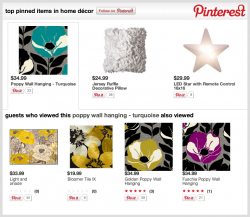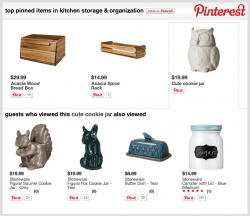Download an excerpt of the L2 Intelligence Report: Omnichannel Retail
Essential eCommerce speaks to VP and general manager of EMEA at RichRelevance, Matthieu Chouard, about the importance of personalising the customer journey.
Personalisation is a technology at the top of most retailers’ minds. The ability to provide a bespoke, even boutique-style, service in order to stand out from the competition is clearly a clever move and this starts by simply recommending products online based on a customer’s taste.
“If you want to make your customer happy, you have to make them understand they are unique and not part of a customer segment,” VP and general manager of RichRelevance EMEA, Matthieu Chouard, tells Essential eCommerce.
We are at the beginning of a significant journey to bring digital capabilities to the in-store environment and vice versa. Personalization should be a large component of this journey. Over the last couple of years, some retailers have deployed interesting omnichannel applications. Examples are those that allow consumers to check inventory or locate items in stores (Best Buy and Target respectively) or manage loyalty (Guess and Sephora). Also, some vendors have launched mobile shopping applications (like Shopkick, RetailMeNot or ShopSavvy). But still, very few of these initiatives are truly personalized.
Yet, the use cases and technology for personalization in omnichannel have never been more viable, and the imperative to get started more apparent.
Omnichannel personalization can be done at two levels. The first consists of pulling together consumer data from different channels to create a comprehensive profile of each consumer (omnichannel data). The second consists of deploying personalization across multiple channels (omnichannel touchpoints).
When these two levels are combined, the following is possible:
- Personalizing a single channel using omnichannel data
- Personalizing multiple touchpoints using single channel data
- Personalizing multiple touchpoints using omnichannel data
One example of personalizing a single channel using omnichannel data is what one of our customers in the upscale department store category did. By merging online intent data with store POS data and applying it to onsite recommendations, they were able to drive a 2.1% lift in website sales (compared to recommendations that utilized only online intent data).
One example of personalizing multiple touchpoints using single channel data is what Monsoon Accessorize, a UK high street apparel leader is doing. They use online intent data to personalize their onsite, in-store and mobile channels. The store solution integrates RichRelevance, Micros and YESPay to allow in-store sales associates to locate and sell a product anywhere in the UK supply chain and show shoppers an extended and personalized product range on their tablets.
Stores utilizing the solution see a 133% improvement in AOV, an increase in one item per check out basket, a 2% reduction in returns and improved customer experience ratings.
Delivering this type of access to rapid innovation is the reason we built our infrastructure and SOA (service-oriented architecture) platform for API-based personalization services. We call this platform Build™ and it provides our retail customers the intent data and functionality needed to bring offline data (like POS) from stores and call centers to the digital experience. This includes real-time data ingestion and export, model import and building, consumer profiles, product and content co-occurrence, segmentation and consumer ID matching. With this functionality, retailers can quickly explore, experiment and build personalization capabilities using an iterative cloud-based approach that doesn’t require data scientists or large investments in infrastructure.
This ability to rapidly innovate to build superior customer experiences through personalization is not limited to omnichannel retailers, it applies to pureplay etailers as well.
In the US, long-time customer Wine.com was able to test an age-old theory on the impact of recommending similar products based on the number of common attributes. Using Build, it developed and implemented a custom personalization algorithm that leveraged the intersection of multiple attributes and measured its performance against the existing set of pre-built RichRelevance algorithms. Not only was the speed with which Wine.com moved from concept to deployment to production unprecedented, the new “similar products” algorithm became one of Wine.com’s best performing strategies, generating about $5 per click.
Our expectation is that Build will become the personalization platform of choice not only for our retail customers, but also for many consumer-facing applications developed by multiple vendors in the space. Build has a light footprint, rich functionality, and is a super performing platform that can sit underneath Hybris, Demandware, Responsys, Exact Target, SLI Systems, HookLogic, Olapic, LivePerson, CrowdTwist and other applications to enable omnichannel personalization via APIs and services.
So make today your Day 1 and commit to omnichannel personalization. Analyze your current and/or future omnichannel applications, determine what different data sources can be used for personalization, decide how many channels you want to enable and then leverage Build to create a superior omnichannel customer experience. We’re here to partner with you each step of the way.
Please join RichRelevance on October 29 for a live webinar on personalization for today’s omnichannel consumer. Customers expect a seamless experience across all available channels, and this webinar will help you connect the dots between mobile, tablet, online and in-store touchpoints.
Join Doug Bryan, an analytics veteran, and Cristina Hernandez, a Senior Sales Engineer, as they share the fully interactive Personalization Maturity Model to help analyze your needs and lead a discussion on how you can create an optimal shopping experience, resulting in greater customer loyalty and increased sales.
The Big Data revolution at Google, Facebook, Amazon and Apple has transformed the consumer journey across channels, and even helped turn a presidential election. This transition simultaneously poses tremendous challenge and opportunity to retailers.
In our session “How Relevance Can Get Your Brand Elected” at last week’s NRF Big Show, Rayid Ghani (Obama for America’s Chief Scientist) and I shared how data scientists have utilized key methodologies for capturing value and turning Big Data to smart data—using it to win votes and create profit. The analogies between data usage in the Obama campaign and my experience at Amazon and RichRelevance are deep: there are three ways to use data in operations, and it is necessary to take small steps toward a very specific goal using an agile, fail-fast methodology.
The methodologies for data usage are analytics; prediction and interruption; and optimization. They transcend the emergence of “Big Data” and extend in their impact from the last century, as do the learnings from their failures. The “big transformative project” is doomed to fail; only iterative implementations see the huge ROI of data-oriented technologies.
As I traveled the exhibit hall, I reached my personal predictions for 2014:
- 2014 will test us: We must know our identity—who are we to our customers and how we maximize that. This challenge exists in a highly competitive and unfriendly ecosystem: Amazon is on a tear and will not stop; will Google, eBay, Apple and Facebook turn out to be friend or foe?
- Omni-channel ROI at scale: 2014 will be the first year with enough historical case studies of successful omni-channel strategies to support systemic investment. Retailers can invest in 5-10 major initiatives and each can build on the successes/failures of past years.
- Emergence of Big Data, Year 2 of 5: Big Data is a long-term trend. We are still in the early adopter phase, where practitioners familiar with the technology and business can be successful, but not enough business people fully understand the technology’s capabilities, ROI or risk in order for 2014 to be the year of mass scale. That said, Big Data is complex and will require numerous years of investment and learning to reach maturity. Executives know that, so this year will see significant investment from both capital and time budgets.
I invite you to learn more about how you can turn your Big Data into smart data for a relevant brand experience by visiting https://richrelevance.com/nrf/.





